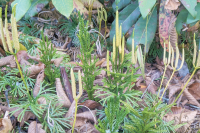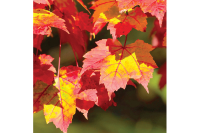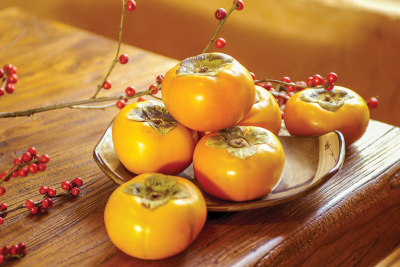Wildlife sanctuary gives a new start to orphaned fawns
 Fawns are especially vulnerable and can become orphaned for a variety of reasons. Cory Vaillancourt photo
Fawns are especially vulnerable and can become orphaned for a variety of reasons. Cory Vaillancourt photo
Nestled away on seven acres in a nondescript warehouse above Canton, not visible from the road, sits an animal rehab facility unlike most others in this wild and rugged region.
People here are crazy about the outdoors. That enthusiasm translates not only to Western North Carolina’s flora, but also its fauna, so on a steamy July afternoon in the heart of the busy season, volunteers at the Edith Allen Wildlife Sanctuary are working hard to keep up with dozens of hungry little mouths.
“We used to just do little mammals, like squirrels and rabbits,” said Gwen Landt, who owns the sanctuary with her husband, David. “But one day, some lady brought us a deer.”
That was the start of a decade-long mission to rehabilitate some of the most vulnerable, adorable ungulates one could ever hope to lay eyes on — newborn fawns.
Seeing them, however, is another matter entirely.
Their brownish-red polka-dotted coats make them difficult to spot in the wild, and their evolutionary instincts compel them to get low and stay still while mom’s away during the day munching on the vegetation that she’ll soon turn into milk to feed them.
But that’s exactly why some fawns sustain horrific injuries — whipped by weed whackers, mauled by lawnmowers, mangled by cars whose owners don’t know they’re hiding out under the oil pan.
Some predators can see them, so fawns that aren’t killed outright come away with life-threatening, debilitating bites from dogs and coyotes.
When their mothers stray into misfortune, struck by a car or unethically poached by hunters out of season, fawns will usually remain in place, waiting patiently and indefinitely for a visit that will never come. Dehydration sets in quickly, as do the maggots that begin to devour still-living flesh right from their tiny bodies. Without help, the fate of orphaned fawns is certain death.
Karen Wilson spends most days during the summer coming from Black Mountain to volunteer at the sanctuary, feeding and cleaning the fawns or helping with laundry. Wilson first met Landt after witnessing a remarkable occurrence, right outside her bathroom window.
A doe had given birth to triplets in Wilson’s garden but abandoned one that was in bad shape. Wilson began calling around, trying to find out what to do with it, when she found Landt, who told her to bring the fawn to the sanctuary. There, Landt put the fawn in an incubator and gave him intravenous fluids.
“She took care of him day and night, around the clock,” said Wilson. “I just fell in love with her compassion and her willingness to fight for even the ones that she knew probably would not make it.”
That particular fawn didn’t.
“His little legs were deformed, so she splinted them. He lived for five days, but for those five days, he got to stand up,” Wilson said. “For those five days he got to stand up and be a deer.”
The work isn’t easy and can be overwhelming, especially at this time of year, Landt explained. The majority of fawns are born in June. Most first-time mothers will give birth to a single fawn, but twins and triplets become more common with each subsequent pregnancy. Almost as soon as they’re born, the fawns begin to encounter trouble. During a late July visit to the sanctuary by The Smoky Mountain News, Landt said she had roughly 50.
The smallest and most imperiled begin their stay in the nursery, where microwaves hum while warming milk and incubators shine with the warmth that helps the fawns keep their body temperatures stable. They’re voraciously hungry, hand-fed and by the end of breakfast groggy, with their swollen little bellies protruding from their sides, just above their spindly, awkward legs.
When they grow larger, they’re moved to a part of the sanctuary called “the barn,” which is a large fenced area away from regular human contact. Here, no less voracious, the fawns jockey for position near racks of baby bottles they drain quickly. Eventually, they’re weaned from the bottle and start eating what their relatives in the wild do.
Nearly all Landt’s tricks of the trade are self-taught.
“There's nowhere to go to school for this, to be a deer rehabilitator. And the pay is really bad,” she joked. “But the benefits outweigh that.”
During season, Landt said she estimates she spends at least $100 a day caring for the fawns, including medication and veterinarian consultations. The money mostly comes out of her own pocket, although volunteer support has been overwhelming.
“It isn’t cheap, but we are so lucky, because this whole community brings their overgrown squash to my door, and their overgrown cucumbers and all these apples,” she says, pointing to a big box of bruised but otherwise beautiful red apples. “Volunteers come to feed the deer and sometimes they bring milk, so we're able to give them the very, very best.”
The Landts are not new to the animal rehab game. David’s mother, Edith Allen, was an underwater mermaid who performed in the campy Florida tourist shows of the 1950s and 1960s. Landt said Allen also took care of the animals that were part of the show, including babies that appeared in some of the original “Tarzan” movies.
Allen’s brother, Ross Allen, was a renowned herpetologist who established a reptile institute, milked snakes and developed a number of anti-venoms — some of which protected American troops during World War II.
This was kind of animal-loving environment in which Gwen’s husband David Landt was raised.
“He grew up with a Capuchin monkey,” Gwen laughed. “His uncle had an otter that would literally get up out of the pond and walk right through the front door of their house. We have eight-millimeter and black-and-white pictures of him wrestling alligators and anacondas underwater. He was the original Steve Irwin, I believe.”
More than 40 years ago, the Landts established a grooming, boarding and training facility for cats and dogs in Waynesville. Today, it’s called Rahama Kennel and Cattery, and it prepared them for the cost, and the benefits, of the sanctuary they now run.
Not all fawns are in need of rescuing, Landt said, and she cautioned people from interfering with a situation they might not understand — often, mothers will return unseen, feed their babies and return to grazing. Eventually, momma will move her babies to a different spot.
“Don't walk up to it,” she said. “Just take a picture of it and send it to me. I can analyze from a picture very well whether a fawn is in need of care or not. Before you take any animal out of the wild — because people pick up little baby fledging birds and bring them to me when their mom is right there in the tree, taking care of them — call and get advice, because good Samaritans sometimes can cause more damage than good.”
Landt’s sanctuary is not a petting zoo; her ultimate goal is to return the deer to the woods. Measures are taken to keep them as wild and as wary of humans as humanly possible.
“It's almost impossible to raise a completely wild deer,” she said. “We don't have any choice but to be their mothers when they're in the nursery. When they go to the barn, we slowly start limiting our contact with them. We won't talk around them. We might even spook them just a little bit. Once they're all weaned, we don't go in there with them. The volunteers will go and throw food over the side of the fence and somebody else will run in and do the water and the grain and the vegetables.”
Around September each year, Landt starts to leave the gate on the barn open, allowing the fawns — now ready to survive on their own — to leave when they’re ready.
“They’re free to come and go as they please, and eventually they'll just go and not come back,” she said.
Then, nine months later, the cycle begins anew.
It’s hard work. Restless nights. Early mornings. Triumphant victories tempered with heartbreaking losses. Deer aren’t even remotely considered an endangered species, and out of all the ways Gwen and David Landt could spend their golden years, Gwen was succinct when asked why she bothers at all.
“Because it matters to them,” she said. “I mean, they're these precious little innocent babies that have been displaced by man and that's not what I would call, ‘Let nature take its course.’ That's not nature. We did this. So I'm going to be there to pick them up and give them the best start I can.”
You can help
For about a decade, the Edith Allen Wildlife Sanctuary in rural Haywood County has helped give a new start to some of the most vulnerable animals that surround us day and night. Orphaned fawns, some sick or injured, require intensive care, feeding and grooming before they can be returned from whence they came, but you can help make sure their rehabilitation sets them up for success. The sanctuary can always use donations, but not necessarily cash — fresh produce is always welcome, and their Amazon wish list includes mostly cleaning materials, medical necessities and standard office supplies like puppy “pee pads,” wound gel, Gatorade, garden hoses and lightbulbs. For more information the Edith Allen Wildlife Sanctuary or to contact owner Gwen Landt directly, visit facebook.com/edithallenwildlife.









